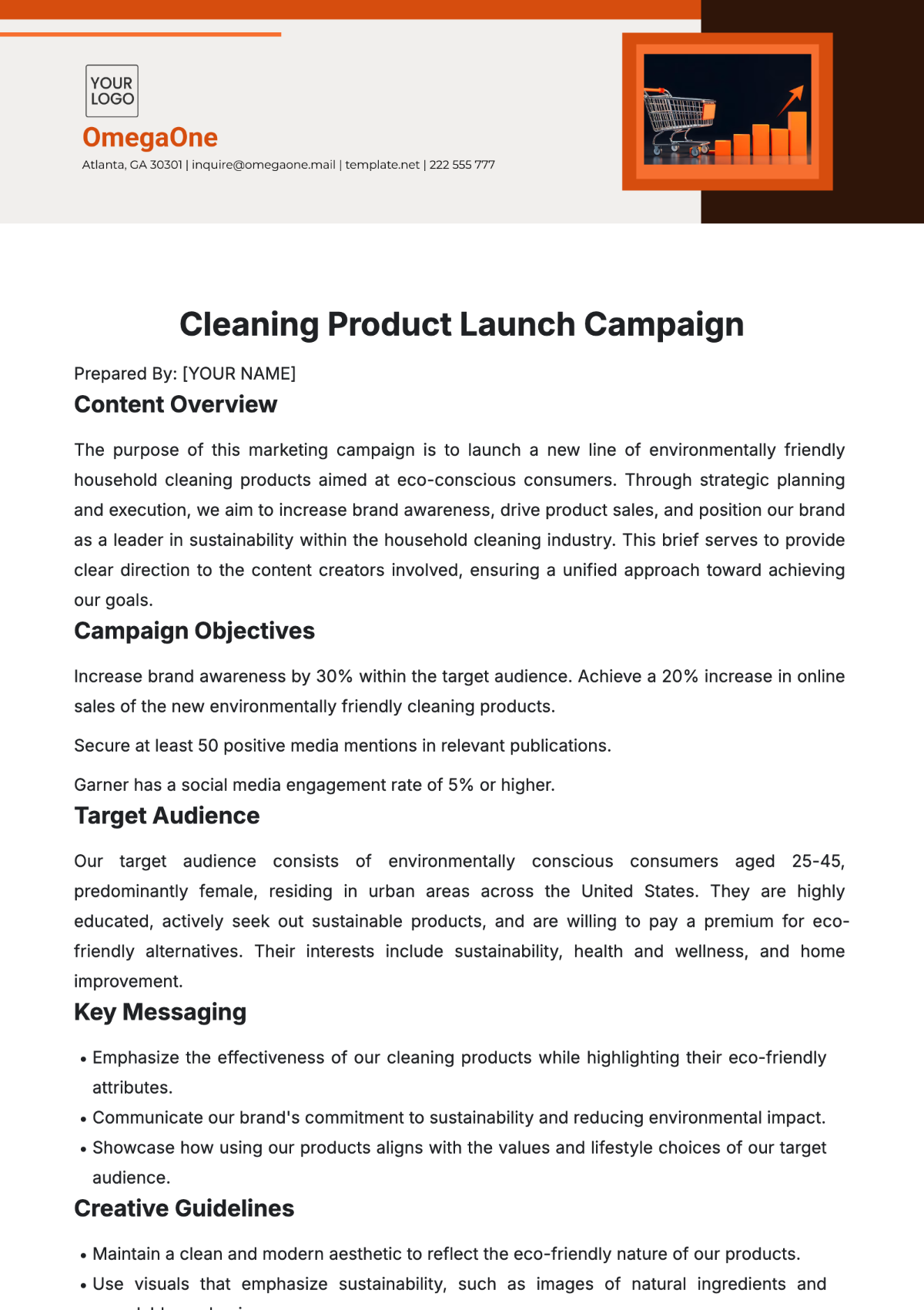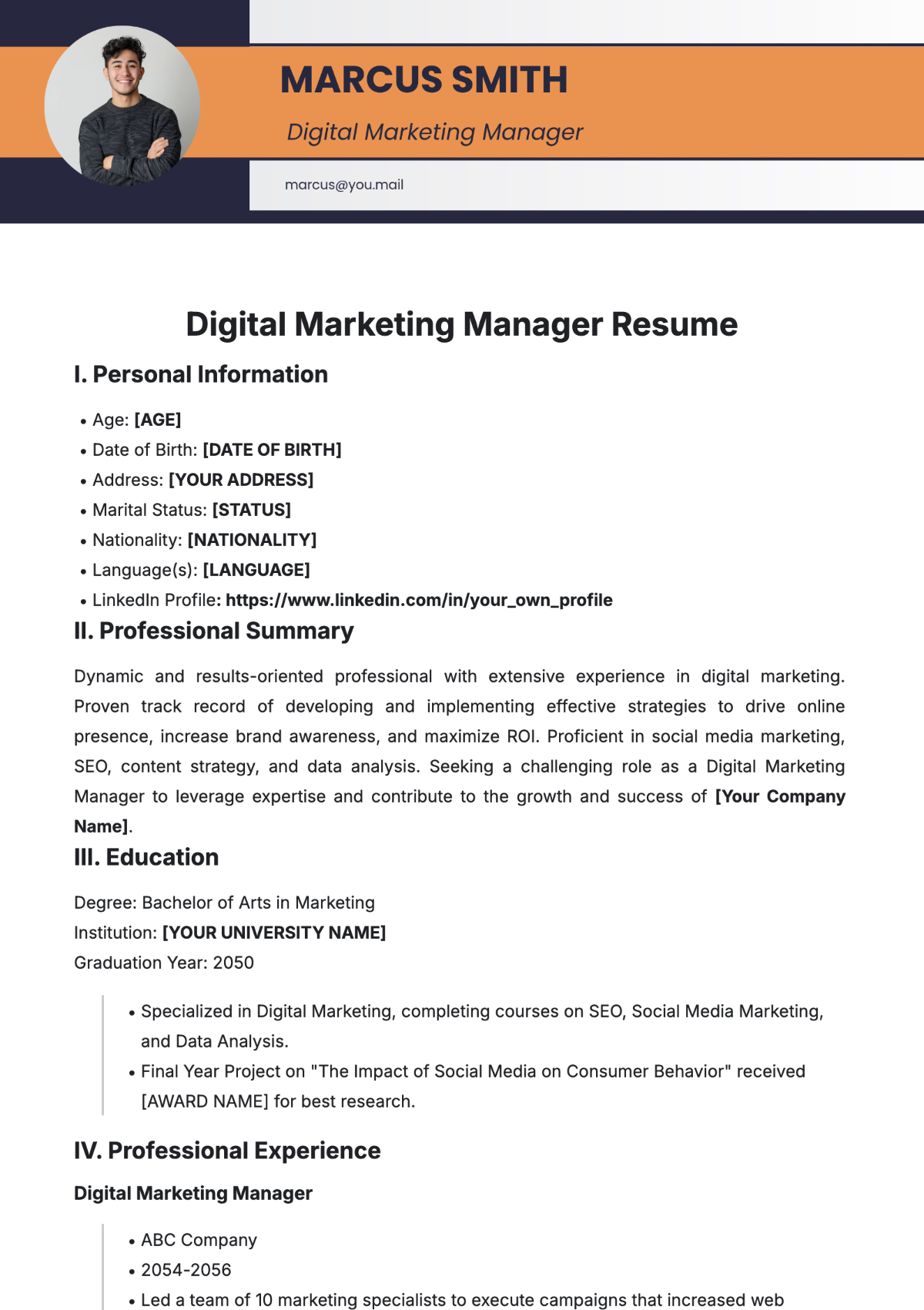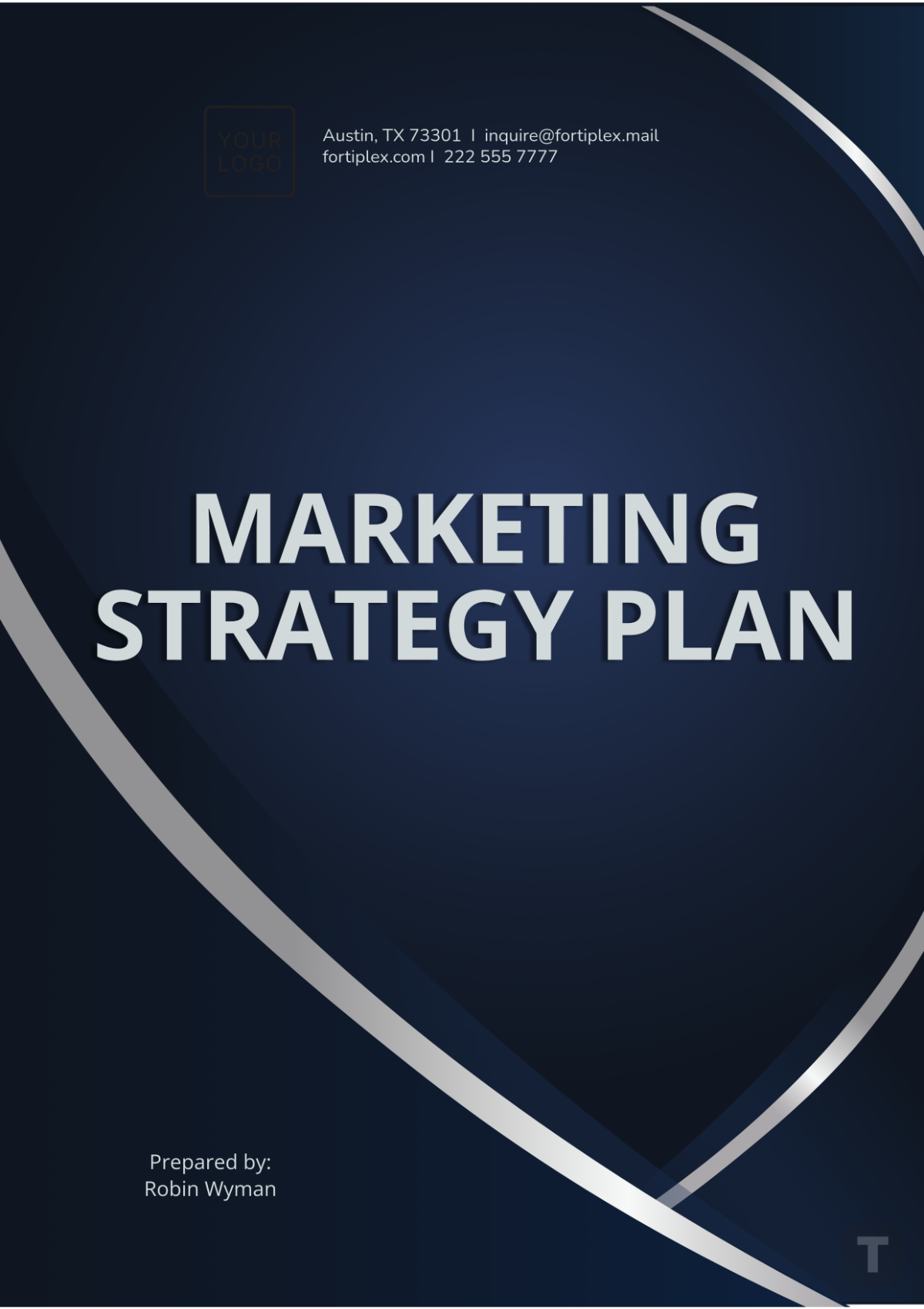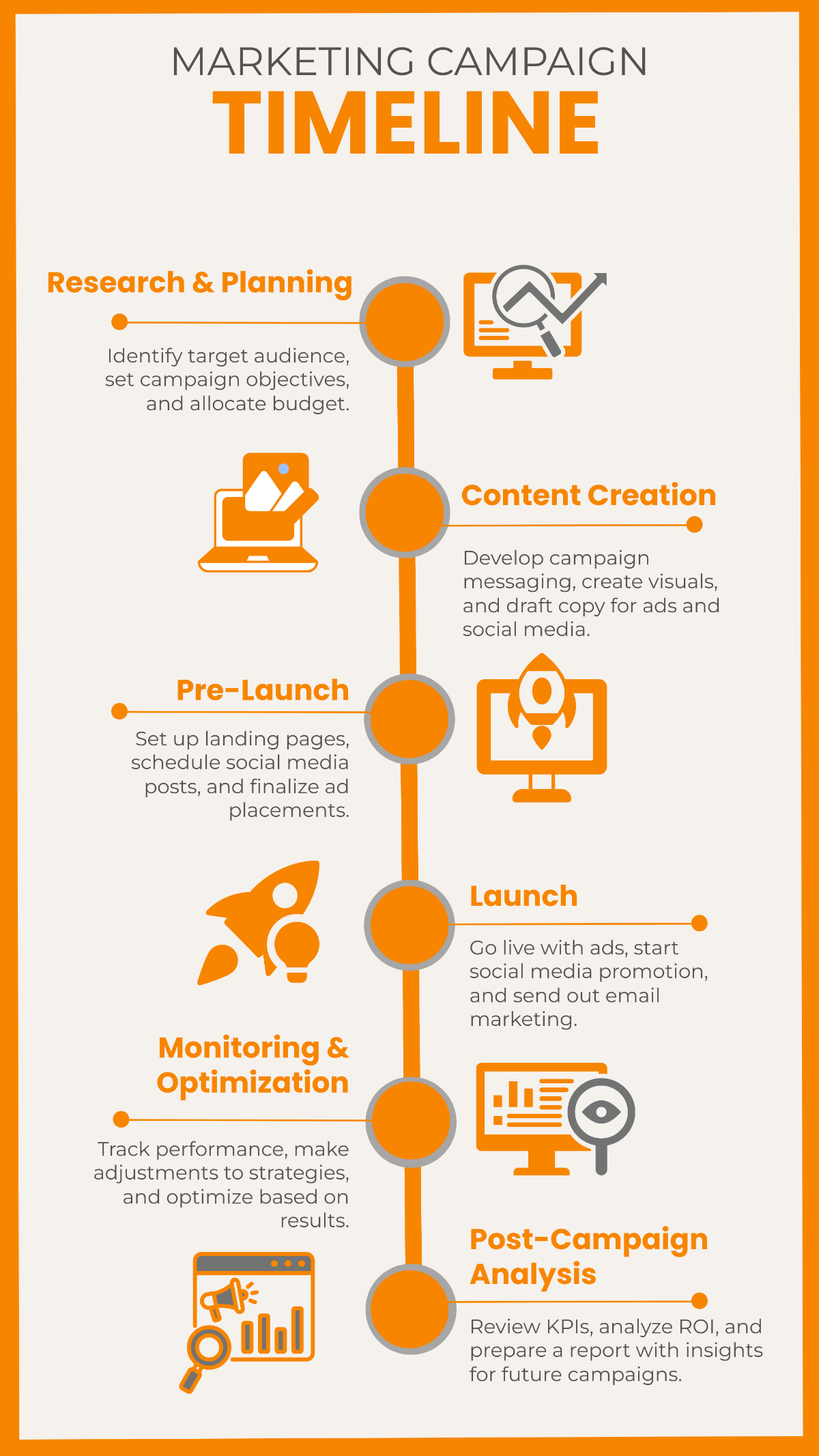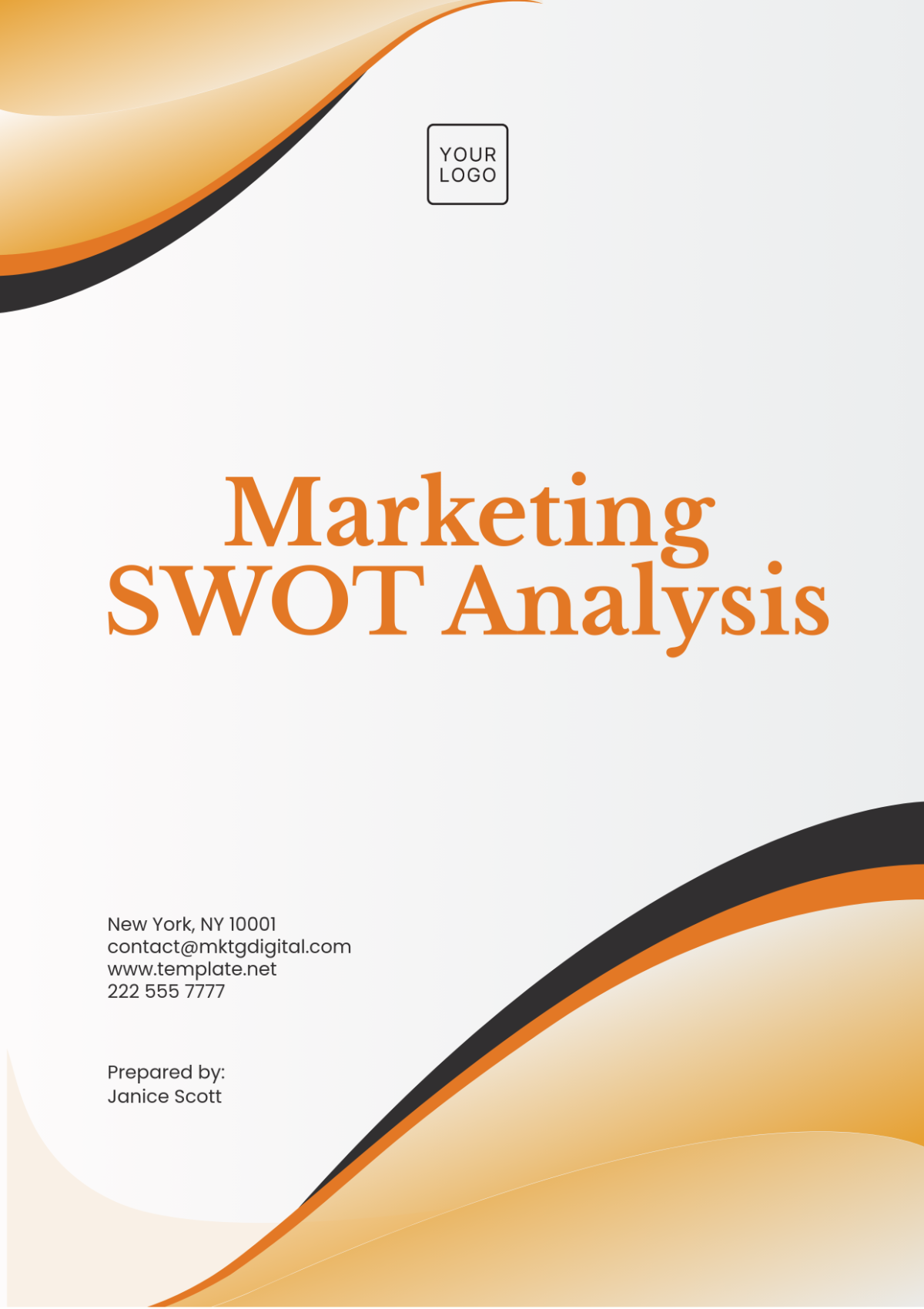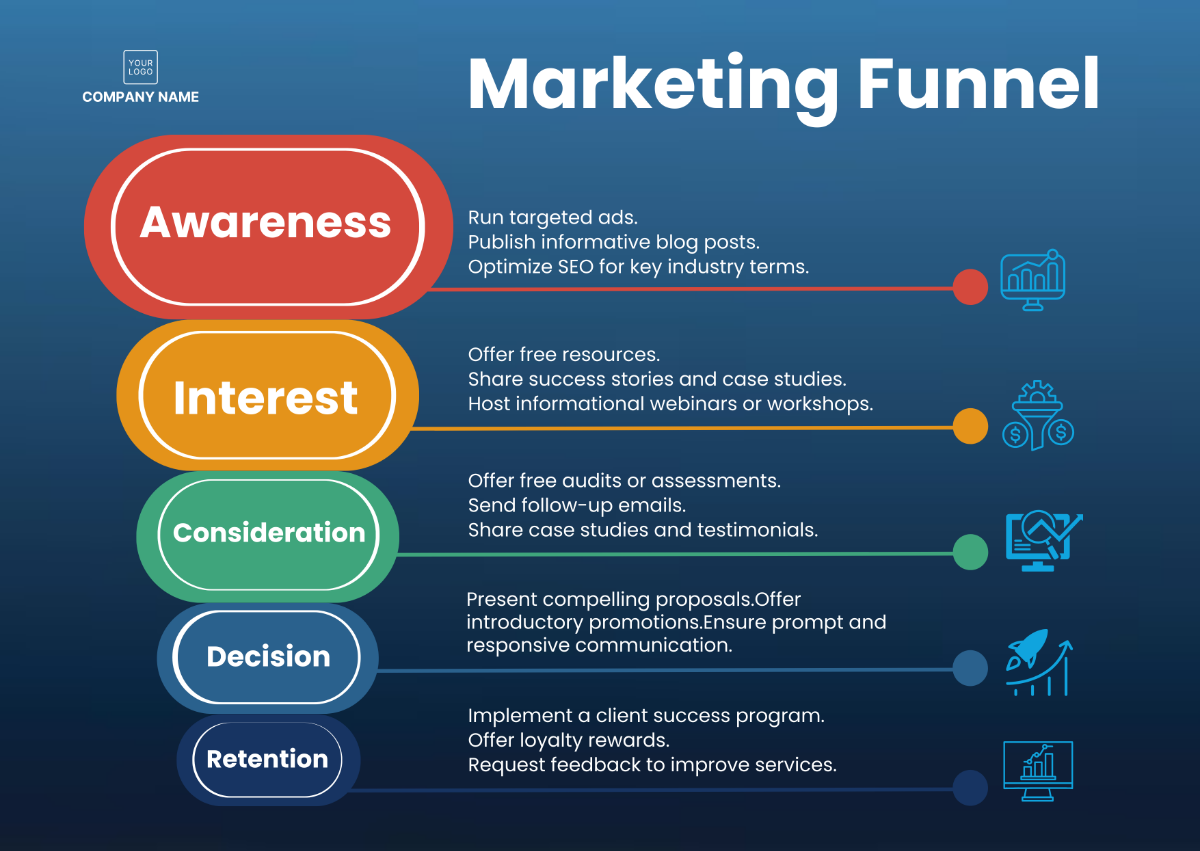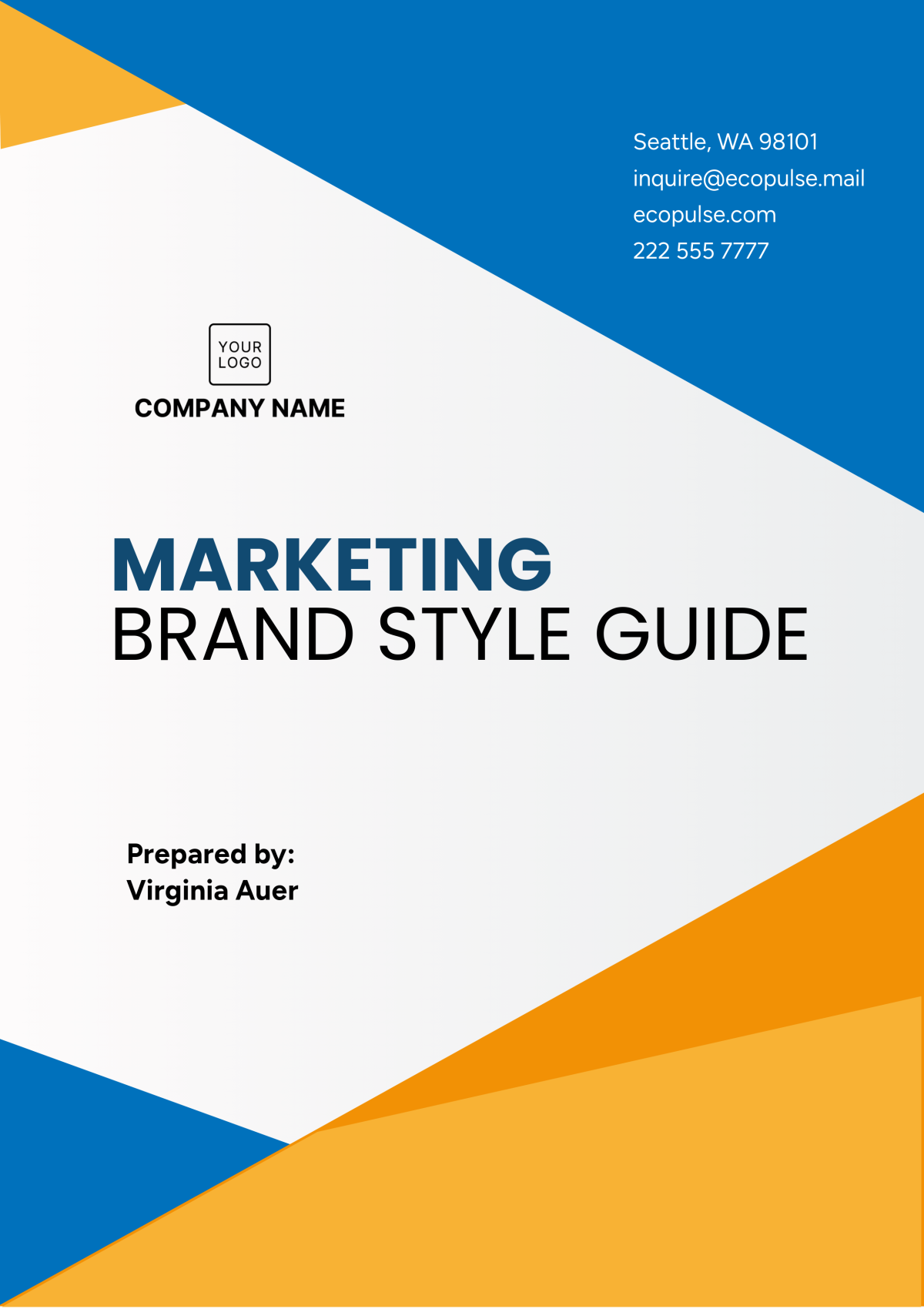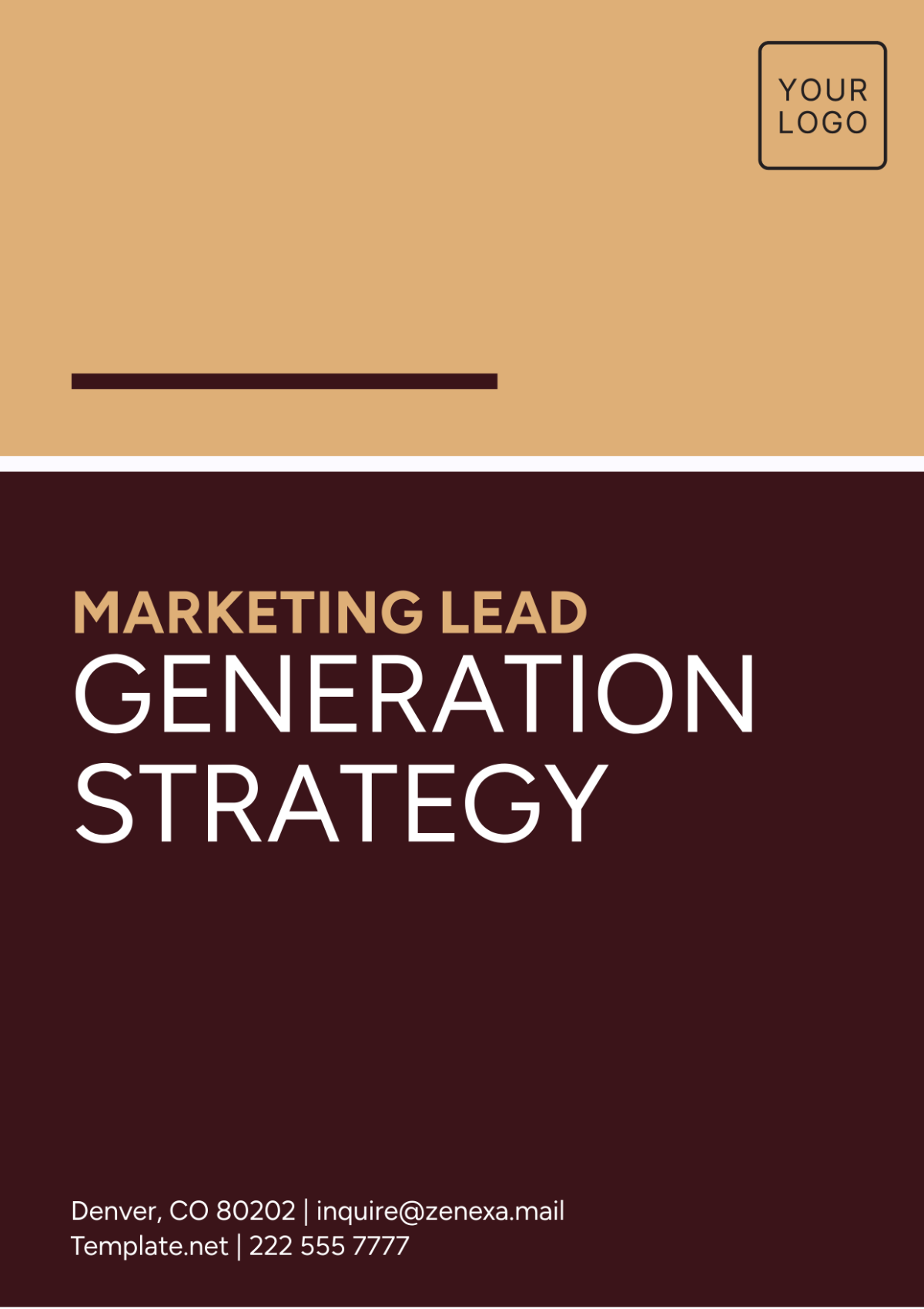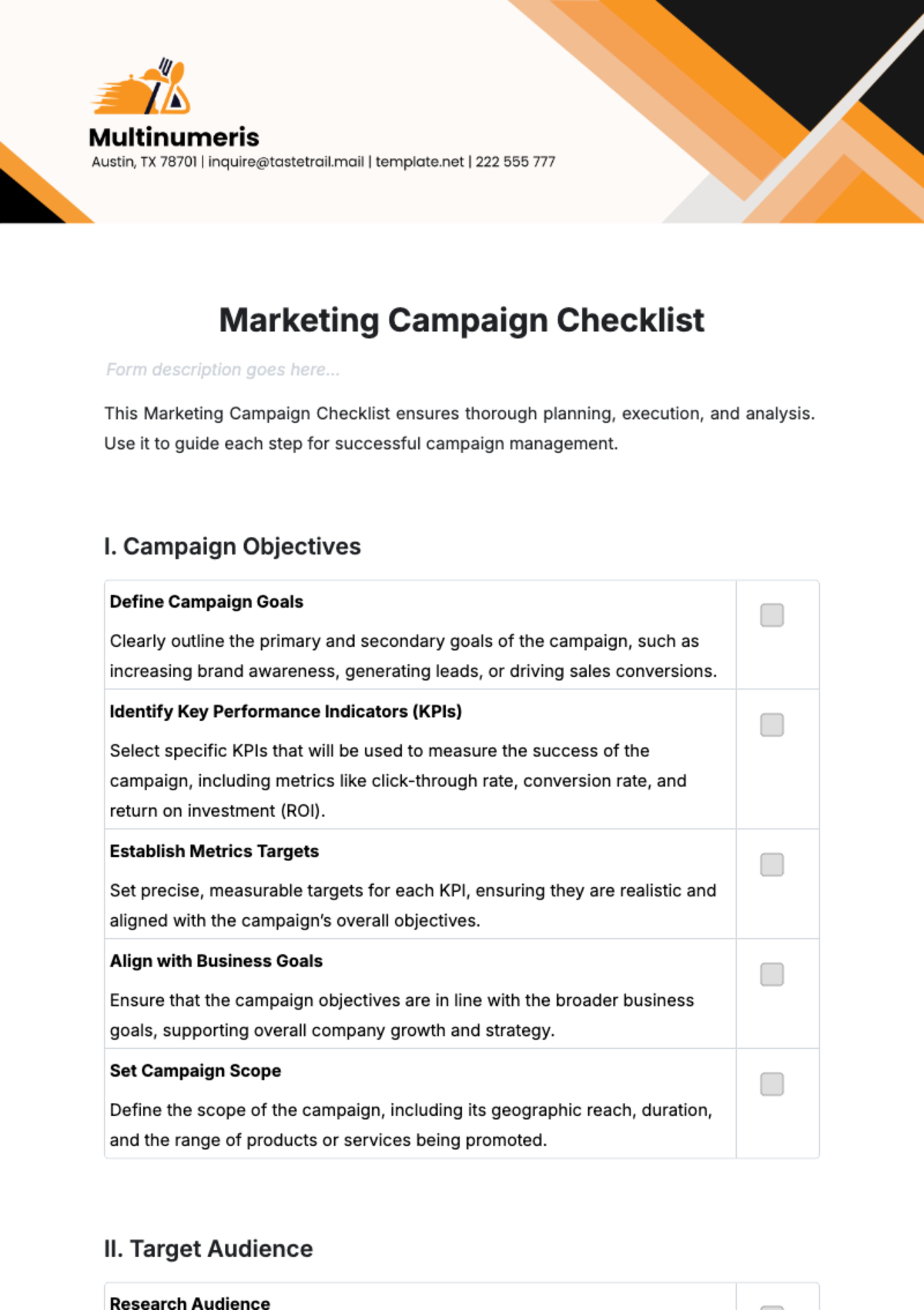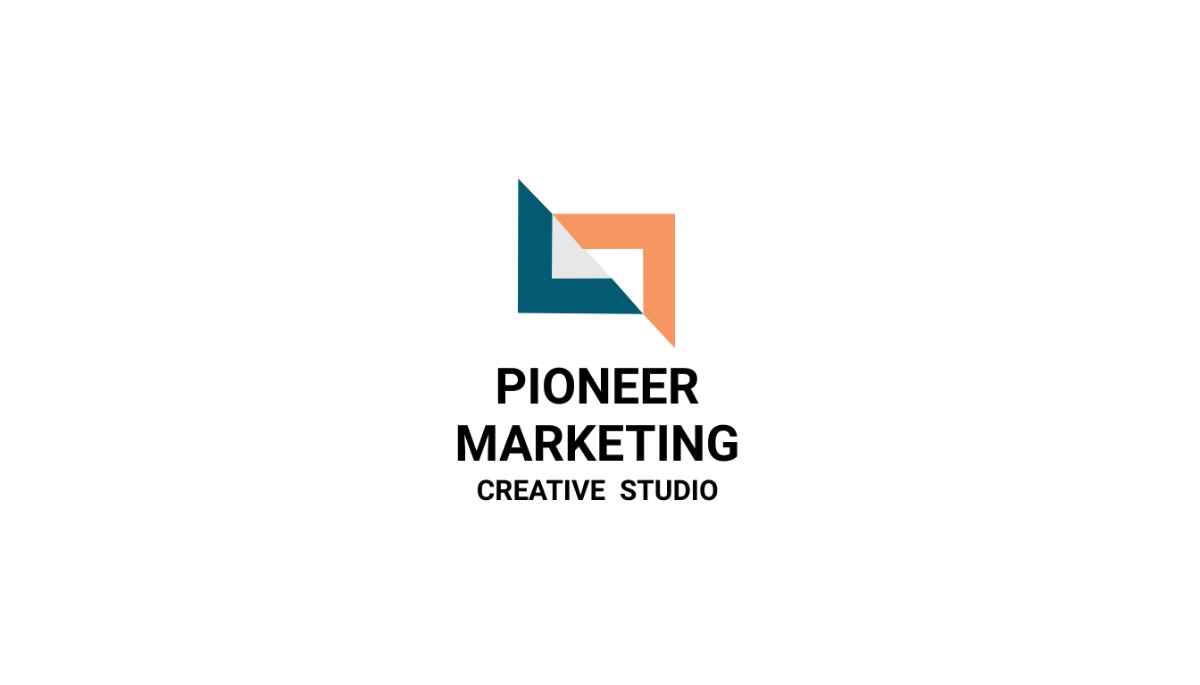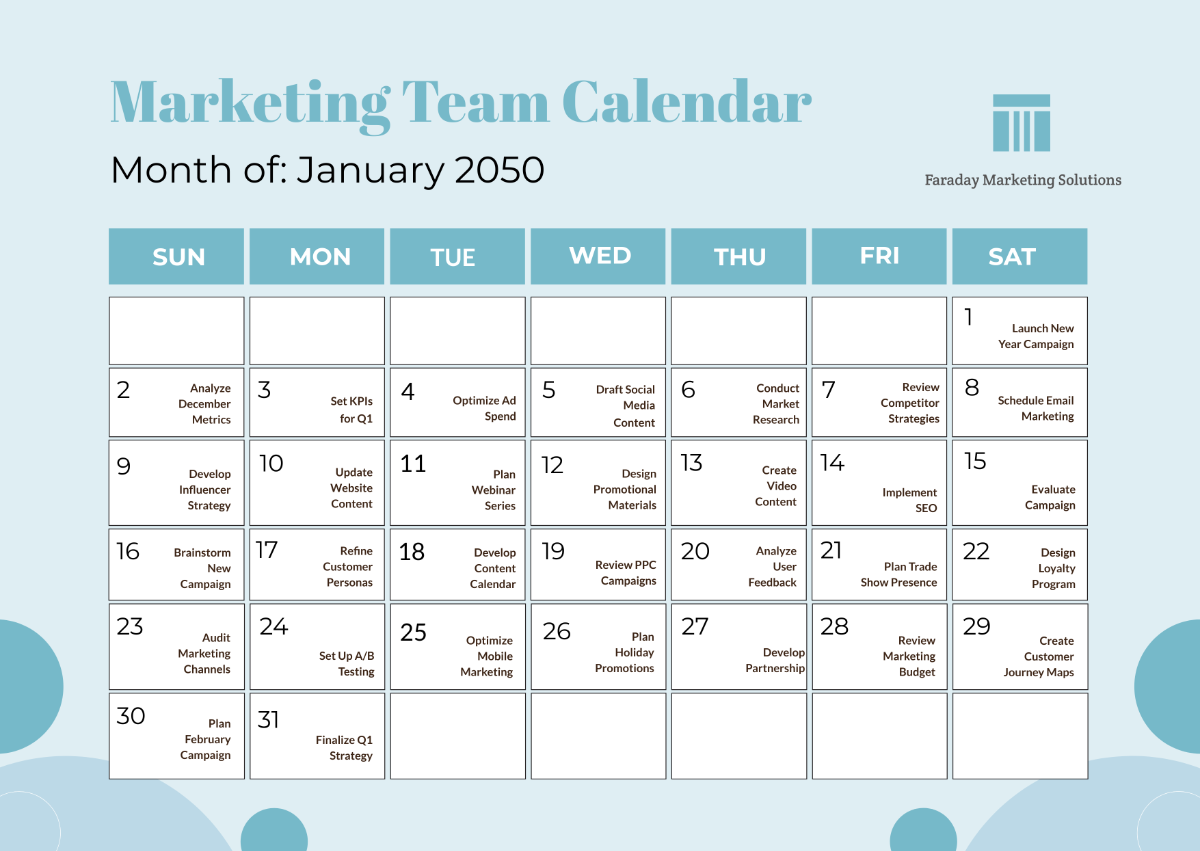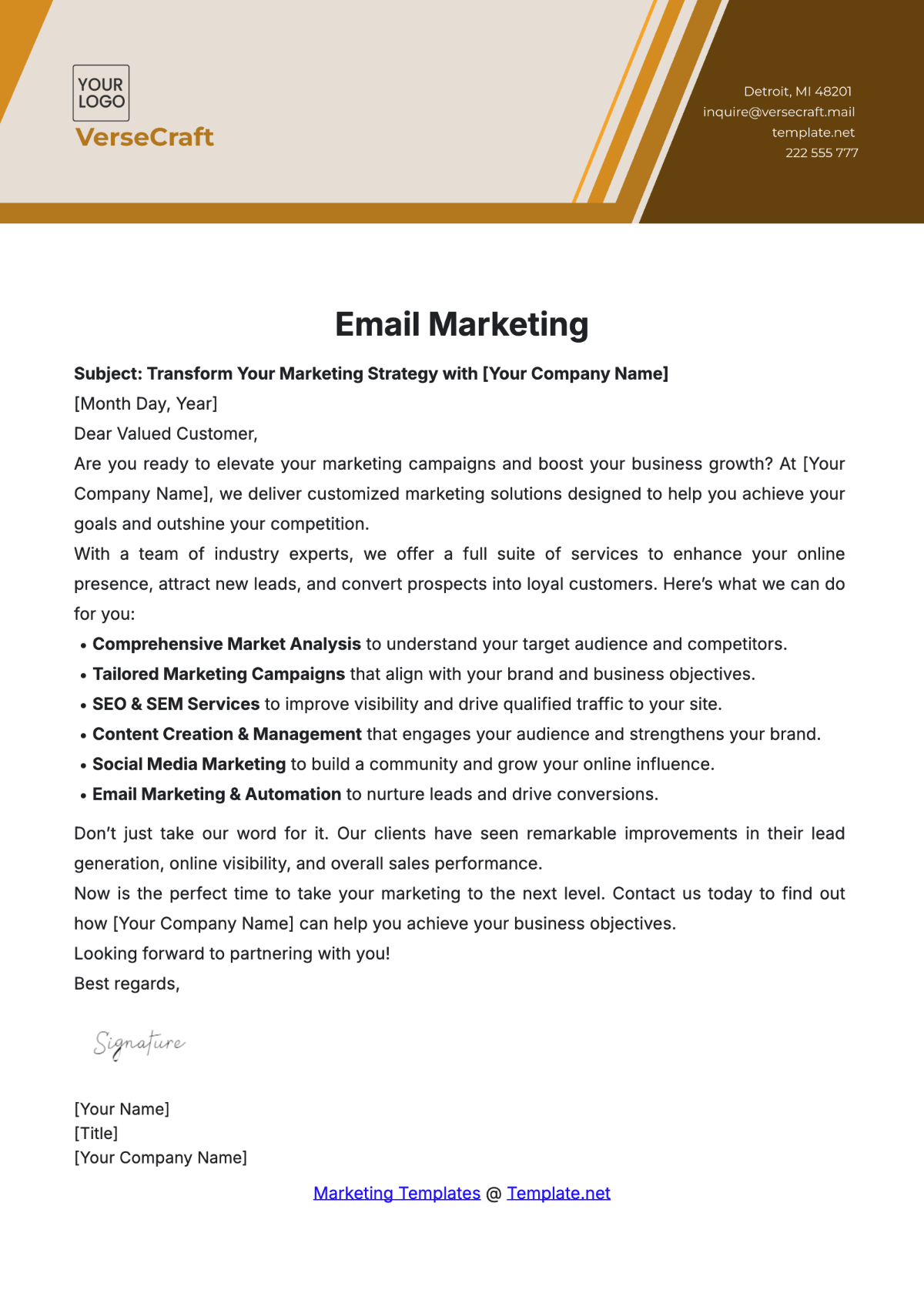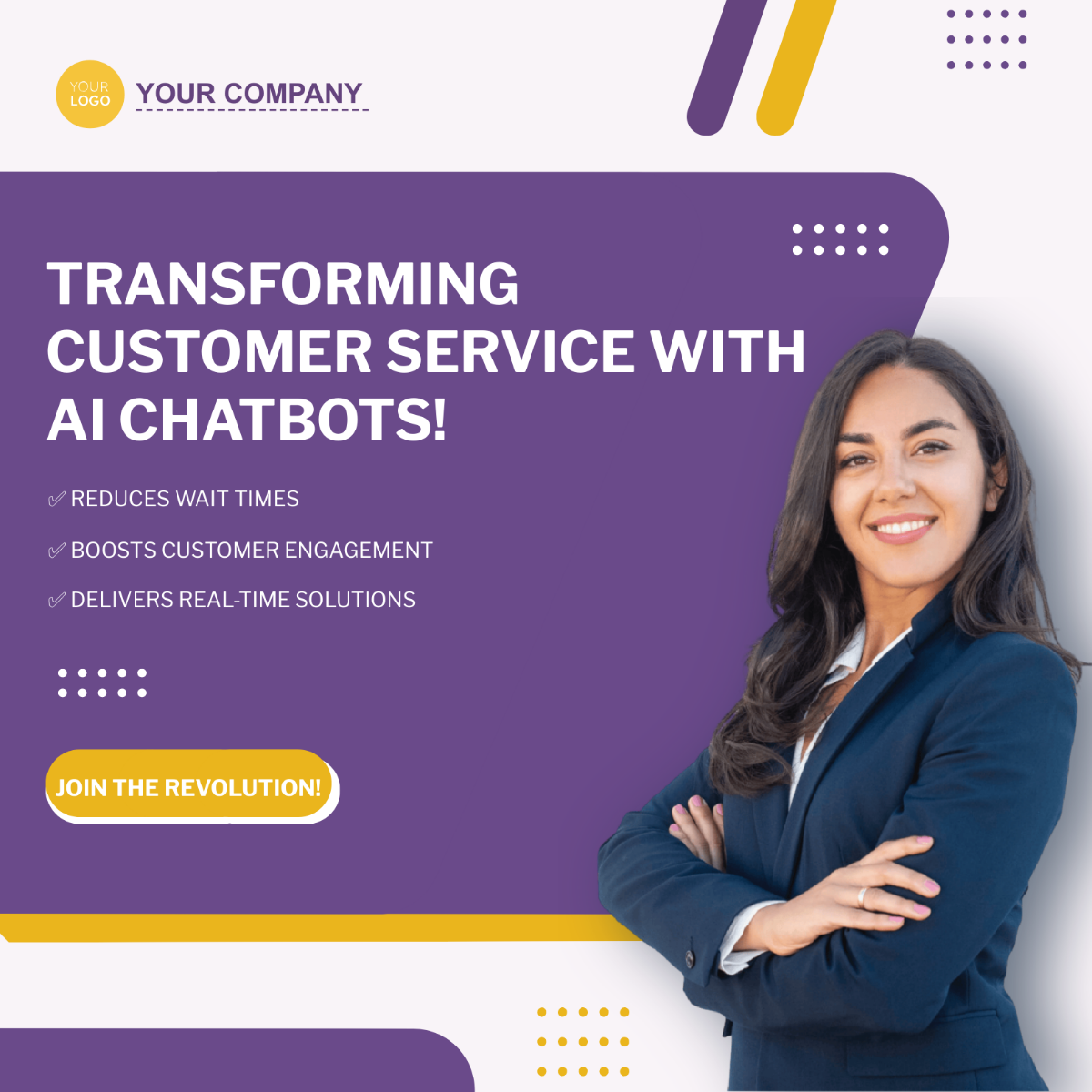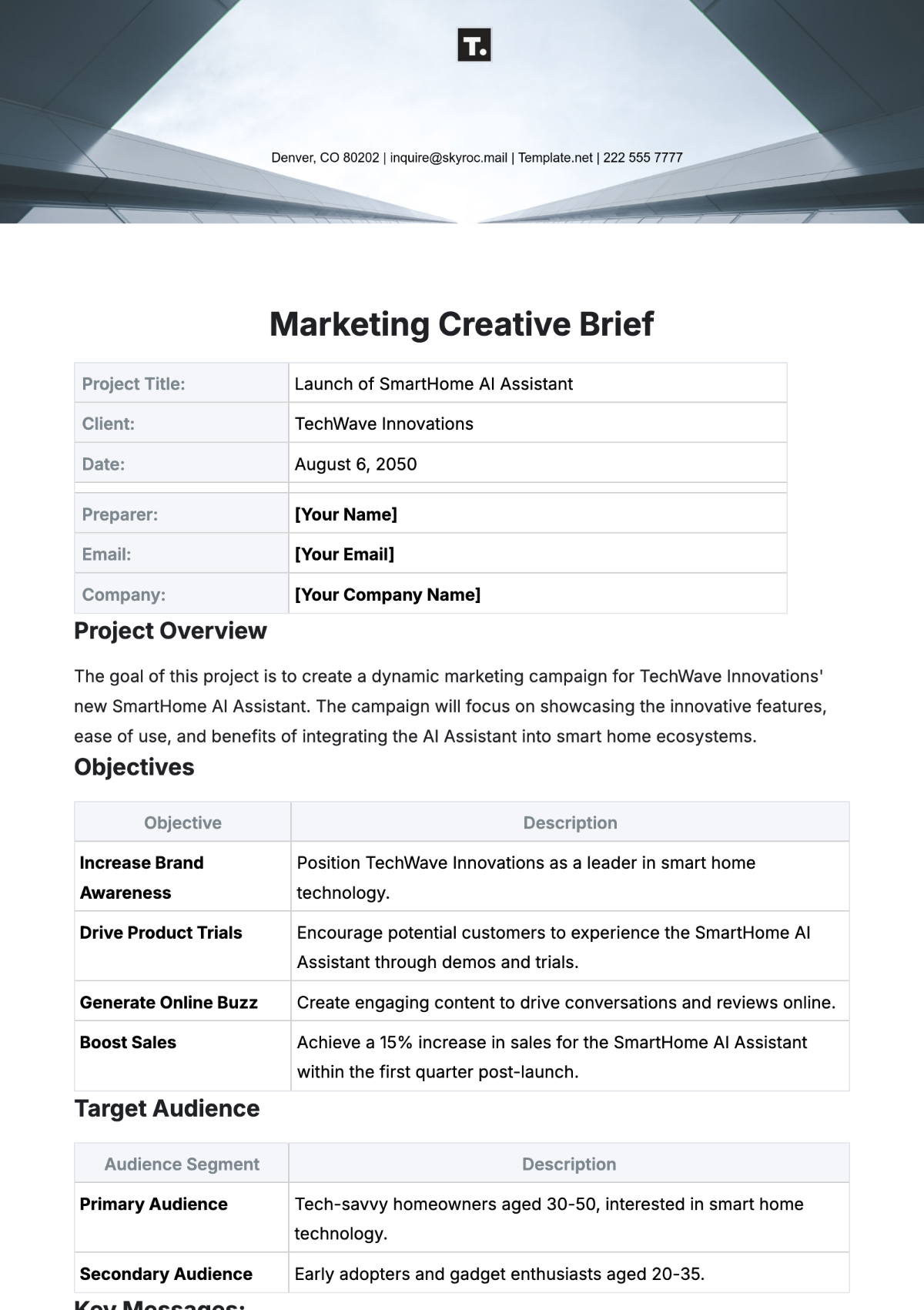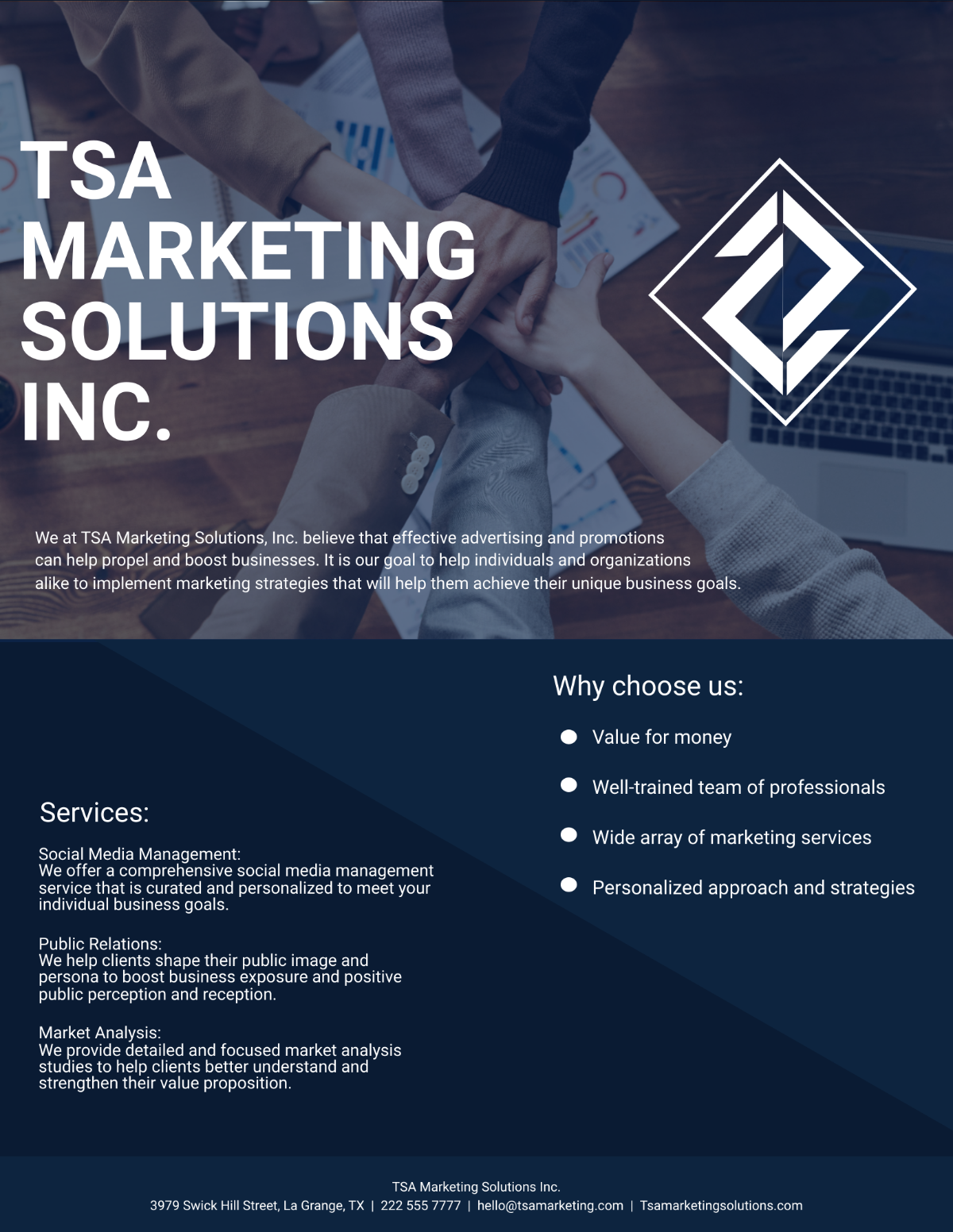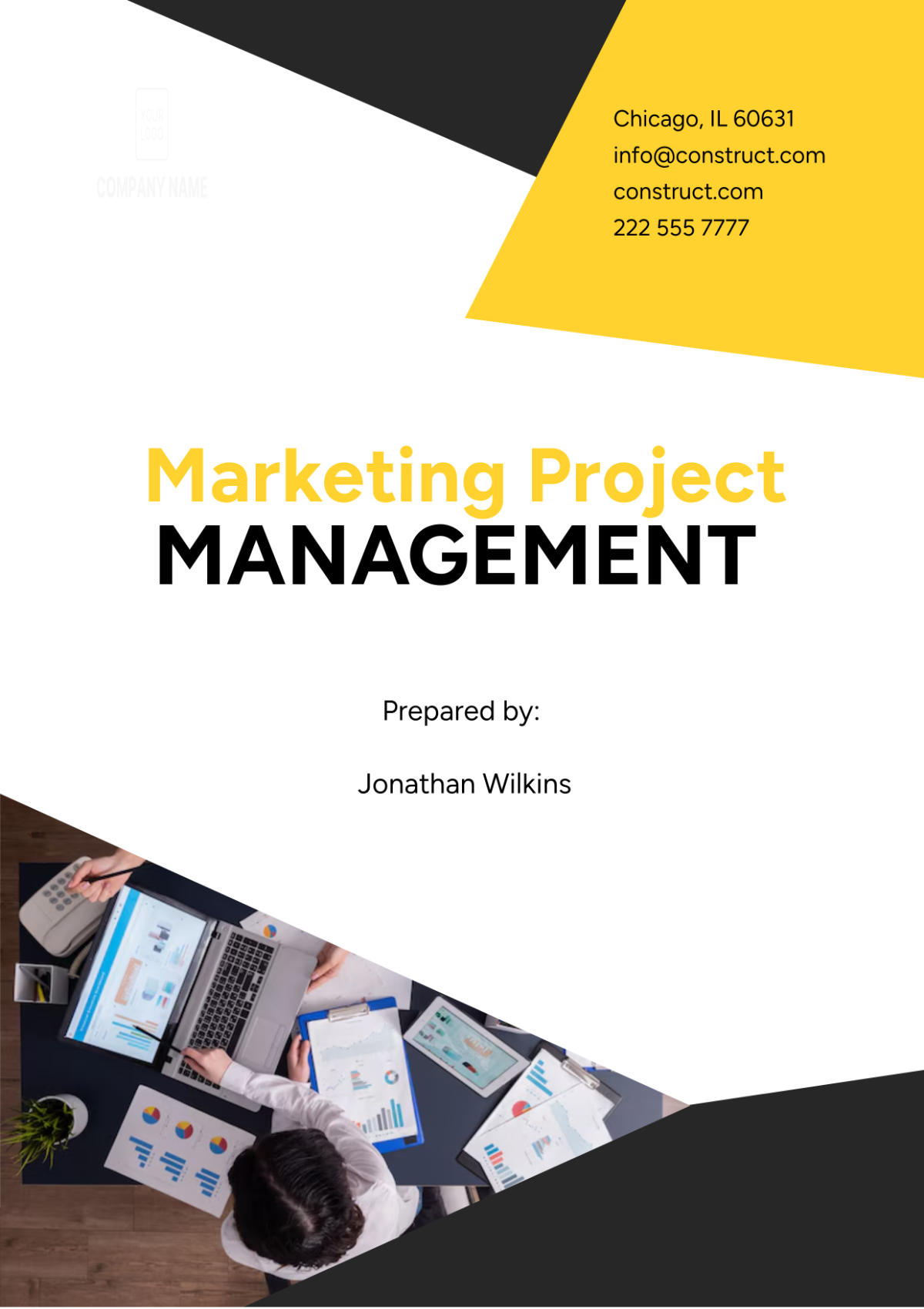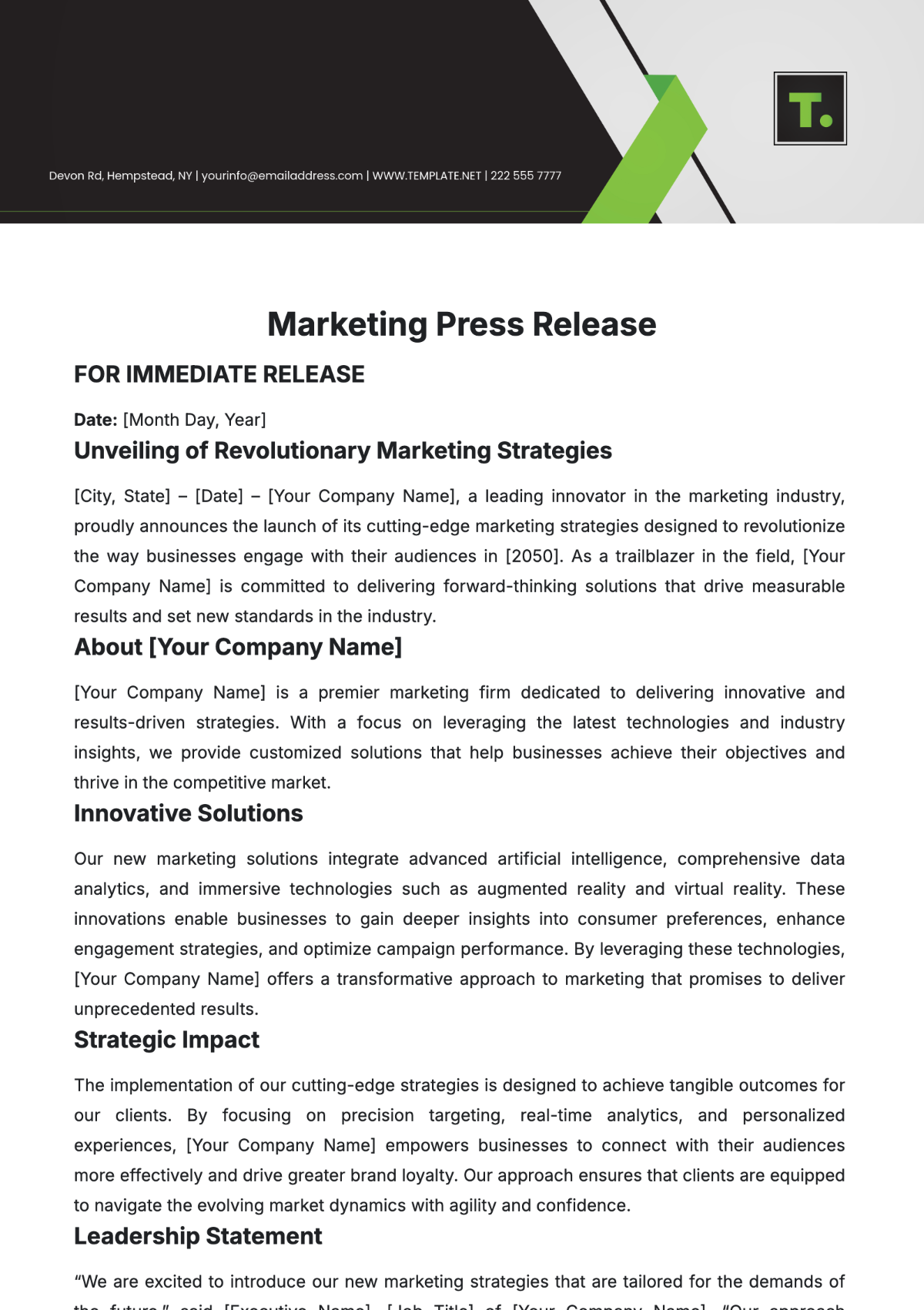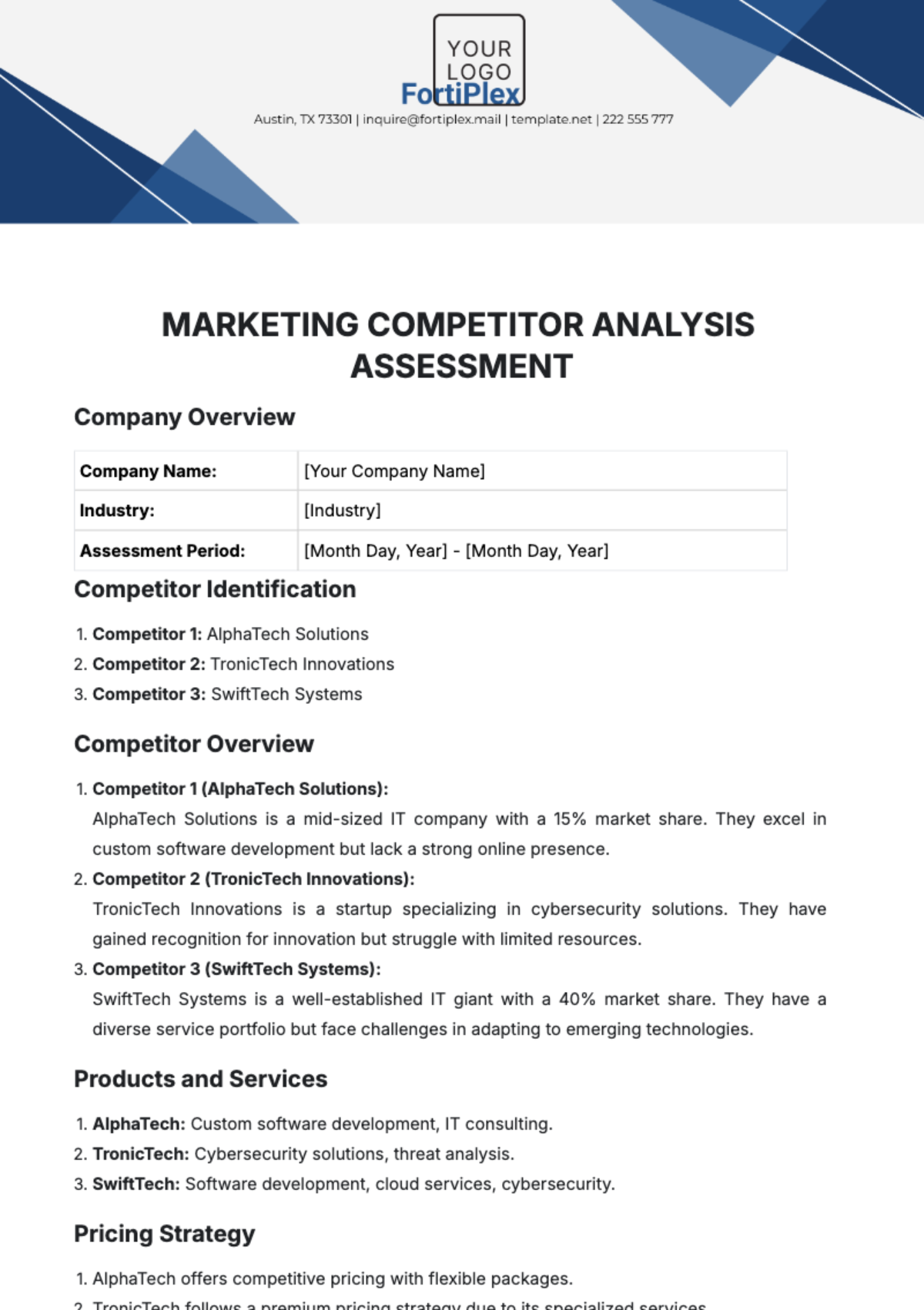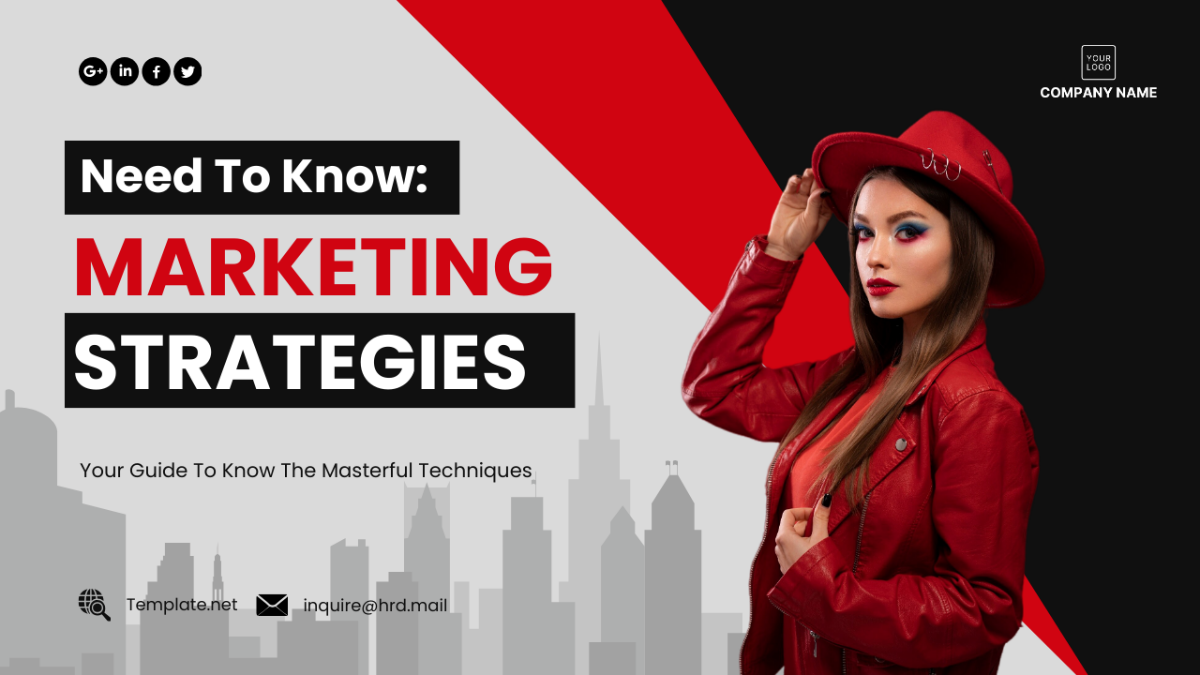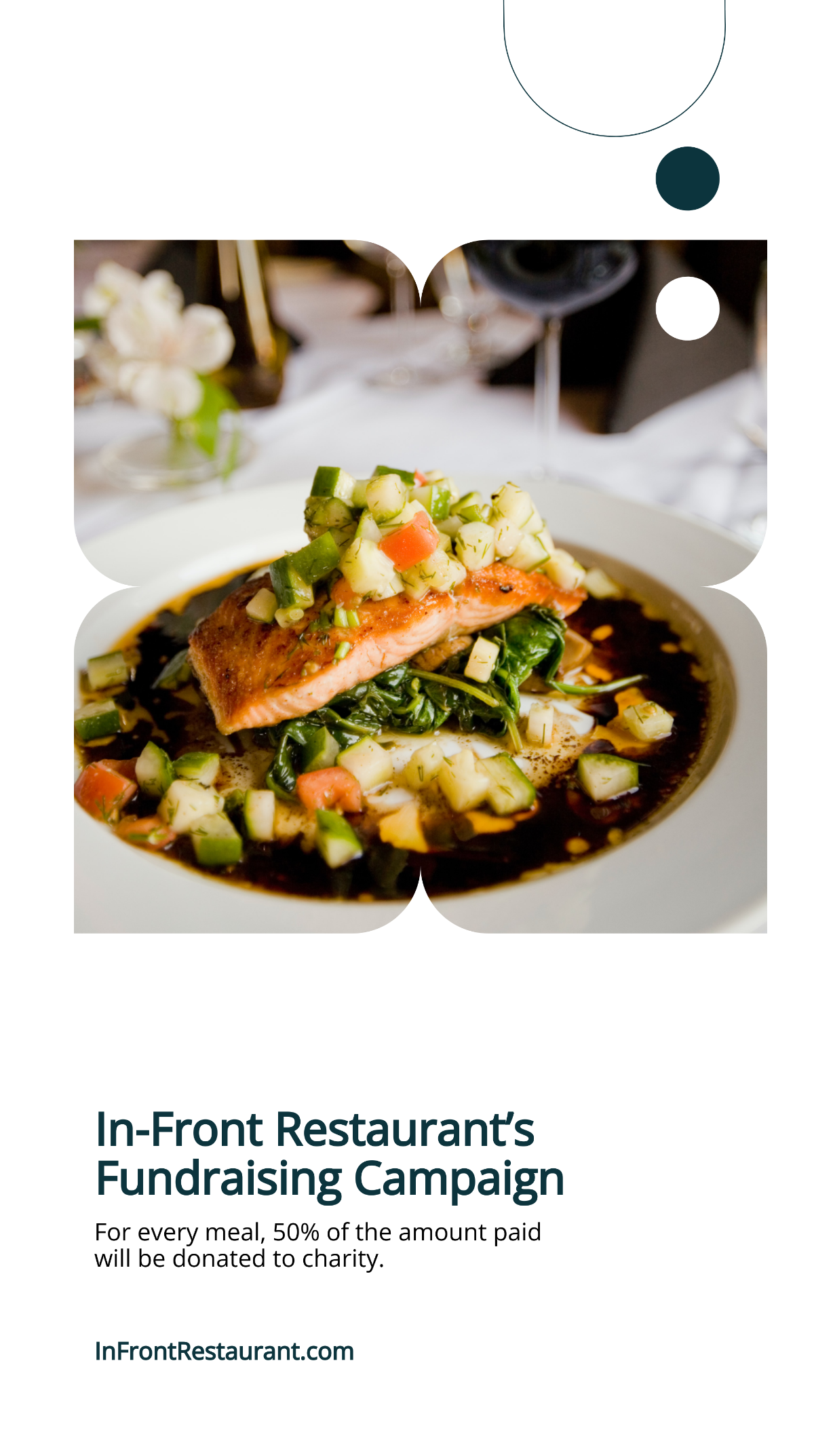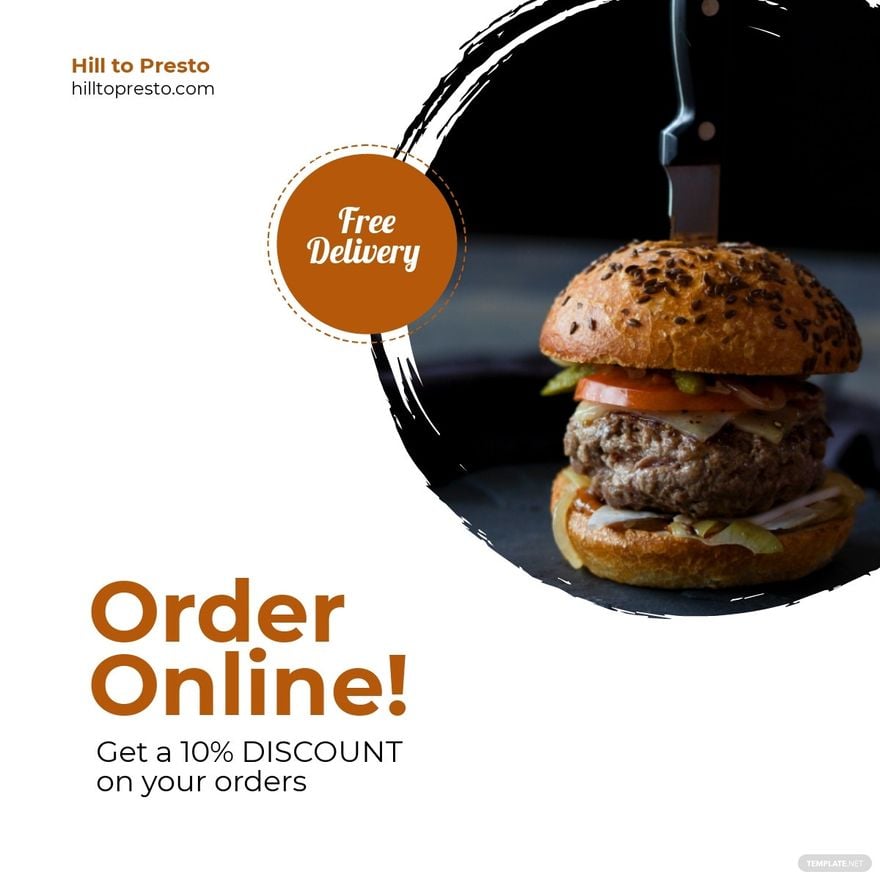Marketing Content Training Curriculum
Introduction
In the rapidly evolving landscape of digital marketing, the ability to create compelling and effective marketing content is a crucial skill for professionals. The Marketing Content Training Curriculum has been meticulously crafted to empower marketing teams and content creators with the knowledge and skills needed to excel in this dynamic field. This comprehensive training program will delve into the intricacies of marketing content, providing a deep understanding of its role in driving brand success and customer engagement.
Purpose
The primary purpose of this curriculum is to equip participants with the expertise required to develop, execute, and evaluate content marketing strategies that resonate with target audiences. By the end of this training, learners will be proficient in creating diverse forms of content that not only captivate but also convert prospects into loyal customers.
Target Audience
This curriculum is designed for marketing professionals, content creators, and anyone interested in enhancing their content marketing skills. Whether you are a seasoned marketer looking to stay updated with the latest trends or a newcomer seeking to grasp the fundamentals, this training will cater to your needs.
Module 1: Understanding Marketing Content
A. Introduction to Marketing Content
In the digital age, marketing content is the lifeblood of successful businesses. It goes beyond traditional advertising by creating value for your audience. Marketing content encompasses a wide array of materials, from blog posts and videos to infographics and social media updates. Its primary goal is to educate, engage, and, ultimately, convert your target audience into loyal customers.
Key Concepts:
Content Marketing: Content marketing is the strategic approach to creating and distributing valuable, relevant, and consistent content to attract and retain a defined audience. It's about building trust and credibility.
Content Types: Content takes various forms, including articles, blog posts, whitepapers, ebooks, videos, podcasts, webinars, and more. Each type serves a unique purpose in the marketing funnel.
Buyer's Journey: The buyer's journey is the process that potential customers go through before making a purchase. It consists of stages like awareness, consideration, and decision-making, and content plays a vital role in guiding prospects through this journey.
B. Content Strategy
Developing a content strategy is the cornerstone of effective content marketing. It involves aligning your content efforts with your business goals and customer needs.
Developing a Content Strategy:
Setting Objectives: Begin by defining clear objectives for your content marketing efforts. Are you aiming to increase brand awareness, generate leads, or drive sales? Your goals should be specific, measurable, and time-bound.
Audience Research: Understand your target audience's demographics, preferences, pain points, and behavior. This knowledge forms the foundation for creating content that resonates with them.
Content Calendar: Create a content calendar to plan your content creation and distribution. It ensures consistency and helps you stay organized.
Content Promotion: Decide how you'll promote your content. This may include social media, email marketing, paid advertising, or influencer partnerships.
Performance Metrics: Identify key performance indicators (KPIs) to measure the success of your content strategy. Common KPIs include website traffic, conversion rates, engagement metrics, and ROI.
Module 2: Content Creation
A. Content Ideation
Brainstorming:
Creative Techniques: Brainstorming is not just about throwing out ideas but also about nurturing creativity. Explore techniques like mind mapping, role-playing, and reverse brainstorming to stimulate innovative content ideas.
Collaboration: Encourage collaboration among team members. Diverse perspectives often lead to more creative and impactful content concepts.
User-generated Content: Consider involving your audience in content creation through user-generated content campaigns. This not only generates fresh ideas but also fosters community engagement.
Keyword Research:
Keyword Selection: Advanced keyword research involves choosing high-impact keywords that align with your content goals and have reasonable search volume. Tools like Google Keyword Planner and SEMrush can aid in this process.
Long-tail Keywords: Discover the power of long-tail keywords, which are more specific and less competitive. They can be a goldmine for niche content and attracting highly targeted traffic.
B. Content Writing
Writing Techniques:
Storytelling: Elevate your content by incorporating storytelling elements. Narratives captivate readers and make information more memorable.
Audience-Centric Writing: Always write with your target audience in mind. Address their pain points, answer their questions, and speak their language.
Content Structure: Explore advanced content structures, such as the skyscraper technique for blog posts, which involves creating comprehensive, in-depth content that outperforms competitors.
SEO Optimization:
On-Page SEO: Go beyond basic keyword placement and delve into on-page SEO elements like optimizing meta titles, descriptions, header tags, and image alt text.
Content-Length Optimization: Understand the relationship between content length and SEO. Long-form content often ranks higher, but it must maintain quality and relevance.
Module 3: Visual Content Creation
A. Graphics and Images
Design Principles:
Visual Hierarchy: Learn how to establish a visual hierarchy in your content to guide the viewer's attention. This involves the use of font size, color, and layout.
Color Psychology: Explore the psychology of color in design and how different colors can evoke specific emotions or actions in the audience.
B. Video Content
Video Production:
Scripting: Learn the art of scripting for video content. A well-structured script can enhance the storytelling and impact of your videos.
Editing: Dive into video editing techniques to create professional-quality videos. Software like Adobe Premiere Pro or Final Cut Pro can be valuable assets.
Platforms:
YouTube: Explore advanced YouTube strategies, including video optimization, audience engagement, and monetization options.
Live Streaming: Understand the potential of live streaming platforms like Facebook Live, Instagram Live, and Twitch for real-time audience interaction.
Module 4: Content Distribution
A. Content Marketing Channels
Social Media:
Content Calendar: Develop an advanced social media content calendar that aligns with your content strategy. It should consider the best times to post and the type of content to share on each platform.
Paid Social Advertising: Explore advanced paid social advertising options, such as Facebook Ads Manager and Instagram Ads, to target specific demographics and behaviors.
Email Marketing:
Segmentation: Dive into advanced email list segmentation techniques to send highly targeted and personalized content to different subscriber groups.
Marketing Automation: Implement marketing automation workflows for personalized email sequences triggered by user behavior.
B. Paid Promotion
Paid Advertising:
Ad Formats: Explore various ad formats beyond text and display ads, such as video ads, carousel ads, and dynamic product ads.
Audience Targeting: Advanced audience targeting involves creating custom audiences and lookalike audiences for precise ad targeting.
Influencer Collaboration:
Influencer Strategy: Develop a sophisticated influencer marketing strategy that aligns with your brand values and objectives.
Campaign Measurement: Understand how to measure the ROI of influencer collaborations, considering not only reach but also engagement and conversion metrics.
Module 5: Content Analytics
A. Data Collection
Analytics Tools:
Google Analytics: Explore advanced features of Google Analytics, such as goal tracking, event tracking, and e-commerce tracking.
Marketing Automation Analytics: Understand how to extract valuable insights from marketing automation platforms like HubSpot or Marketo.
Data Sources:
Social Media Insights: Dive into the data available from social media platforms, including reach, engagement, and audience demographics.
User Behavior Tracking: Implement user behavior tracking through tools like heatmaps and session recording to understand how users interact with your content.
B. Analyzing Results
Metrics:
Customer Lifetime Value (CLV): Understand CLV and its significance in content marketing. Discover strategies to increase CLV through content engagement.
Attribution Modeling: Explore advanced attribution models to accurately attribute conversions to different touchpoints along the customer journey.
Continuous Improvement:
A/B Testing: Implement advanced A/B testing strategies to optimize content elements, such as headlines, CTAs, and content length.
Personalization: Leverage data-driven personalization techniques to deliver content tailored to individual user preferences.
Module 6: Content Personalization
A. Personalization Strategies
Customer Segmentation:
Behavioral Segmentation: Dive deeper into behavioral segmentation, which involves categorizing customers based on their interactions with your content and website. Learn how to tailor content to their behavior patterns.
Life Cycle Stage Segmentation: Explore advanced segmentation by categorizing customers into different lifecycle stages (e.g., leads, prospects, loyal customers) and delivering content specific to each stage.
Dynamic Content:
Dynamic Email Campaigns: Understand how to create dynamic email campaigns that change content based on recipient behavior or preferences.
Website Personalization: Explore techniques for personalizing website content in real-time based on user data.
B. AI and Machine Learning
AI-Powered Personalization:
Recommendation Engines: Learn about recommendation engines powered by AI and how they enhance user experiences by suggesting relevant content, products, or services.
Predictive Personalization: Explore predictive analytics and machine learning models that forecast user preferences and personalize content accordingly.
Predictive Analytics:
Predictive Content Trends: Understand how predictive analytics can help you identify emerging content trends and stay ahead of the competition.
Content Optimization: Use AI-driven insights to optimize content creation and distribution strategies for maximum impact.
Module 7: Content Compliance and Ethics
A. Legal Framework
Copyright and Fair Use:
Fair Use Guidelines: Dive deeper into the fair use doctrine, including factors that determine whether the use of copyrighted material is fair.
Creative Commons Licensing: Explore various Creative Commons licenses and how they impact content usage and sharing.
Privacy Regulations:
GDPR Compliance: Understand the General Data Protection Regulation (GDPR) in-depth, including its implications for collecting and using customer data in content marketing.
CCPA Compliance: Explore the California Consumer Privacy Act (CCPA) and its requirements regarding data privacy and consumer rights.
B. Ethical Content Practices
Transparency:
Sponsored Content Disclosure: Learn about advanced practices for disclosing sponsored content, including clear labeling and transparency in partnerships.
Ethical Affiliate Marketing: Understand the ethical considerations of affiliate marketing, including the promotion of products or services you genuinely endorse.
Content Integrity:
Fact-Checking: Explore advanced fact-checking techniques to ensure the accuracy and credibility of your content.
Debunking Misinformation: Learn how to effectively debunk misinformation and fake news while maintaining a respectful tone.
Module 8: Crisis Management and Reputation
A. Crisis Communication
Identifying Content Crises:
Social Listening Tools: Explore advanced social listening tools that help you monitor brand mentions and detect potential content-related crises early.
Scenario Planning: Develop advanced crisis scenario plans to respond swiftly and effectively to content-related emergencies.
Reputation Recovery:
Reputation Repair Content: Understand the role of reputation repair content, such as public apologies, corrective actions, and transparent communication.
Monitoring and Recovery Metrics: Explore advanced metrics for monitoring reputation recovery efforts, including sentiment analysis and sentiment change over time.
B. Reputation Management
Online Reputation:
Online Reputation Metrics: Dive into advanced online reputation metrics, such as brand sentiment by channel and online reputation score.
Proactive Reputation Enhancement: Explore advanced strategies for proactively enhancing your online reputation through positive content creation and community engagement.
Review and Feedback Handling:
Review Management Tools: Learn about advanced review management tools and platforms that streamline the handling of customer reviews across various online platforms.
Feedback Integration: Integrate customer feedback into your content strategy to show responsiveness and continuous improvement.
Module Time Allocation
These percentages represent the approximate allocation of time for each module in the curriculum. Please note that these percentages can vary based on the specific training program and the depth of coverage required for each topic.
Contact Information
For any inquiries, assistance, or further information regarding the Marketing Content Training Curriculum, please don't hesitate to get in touch with us.
[Your Company Name]
Email: [Your Company Email]
Address: [Your Company Address]
Phone: [Your Company Number]
Website: [Your Company Website]


